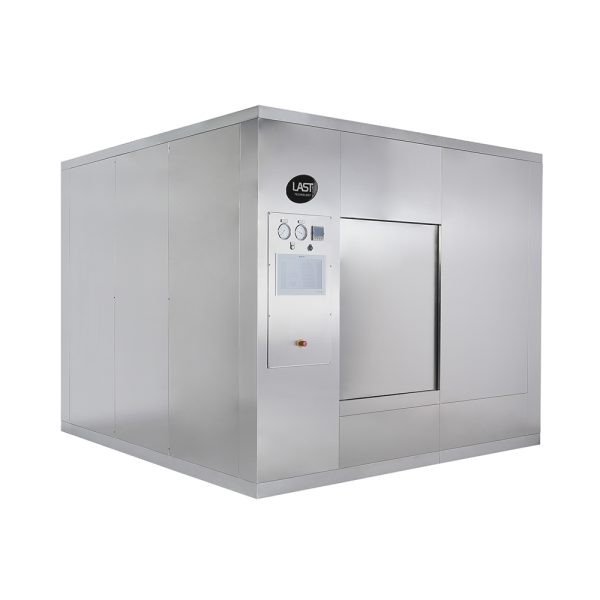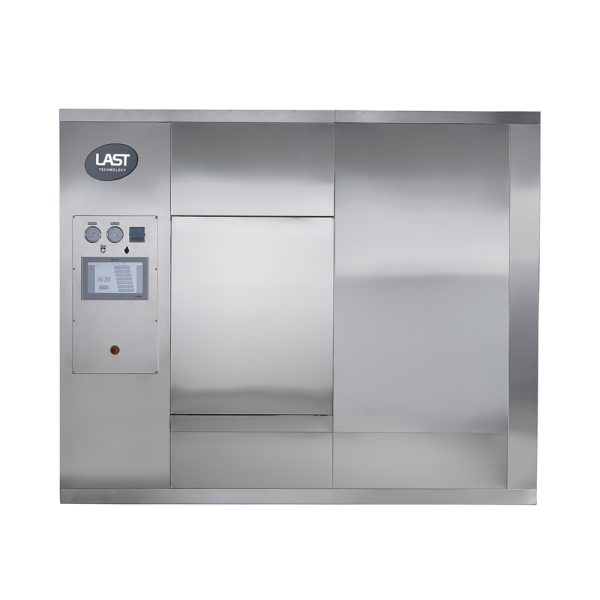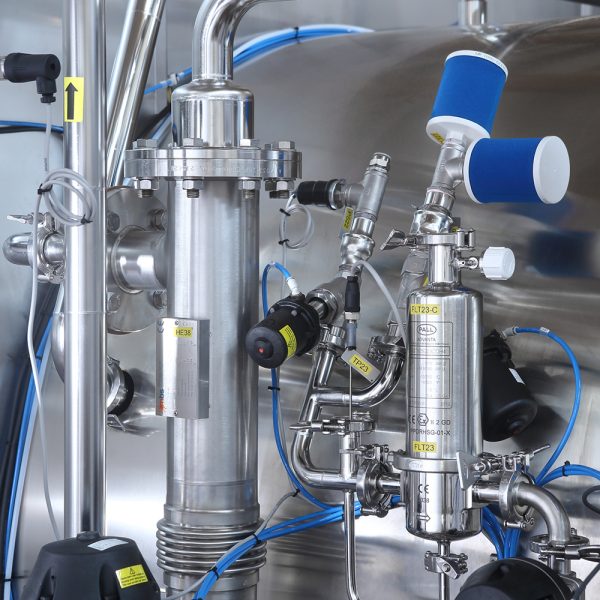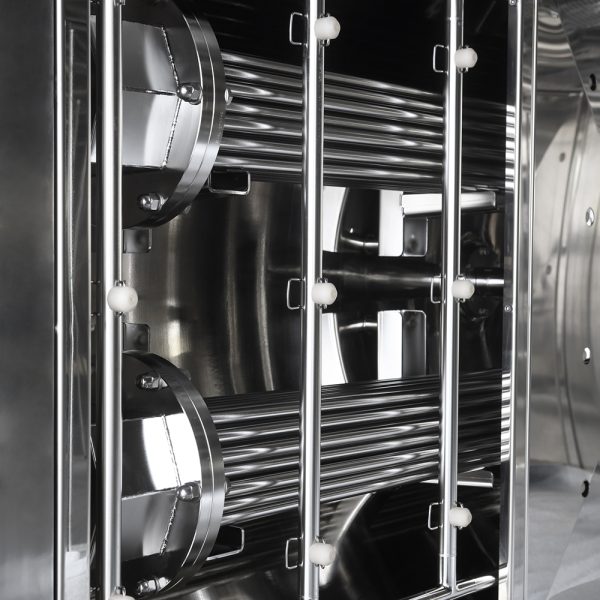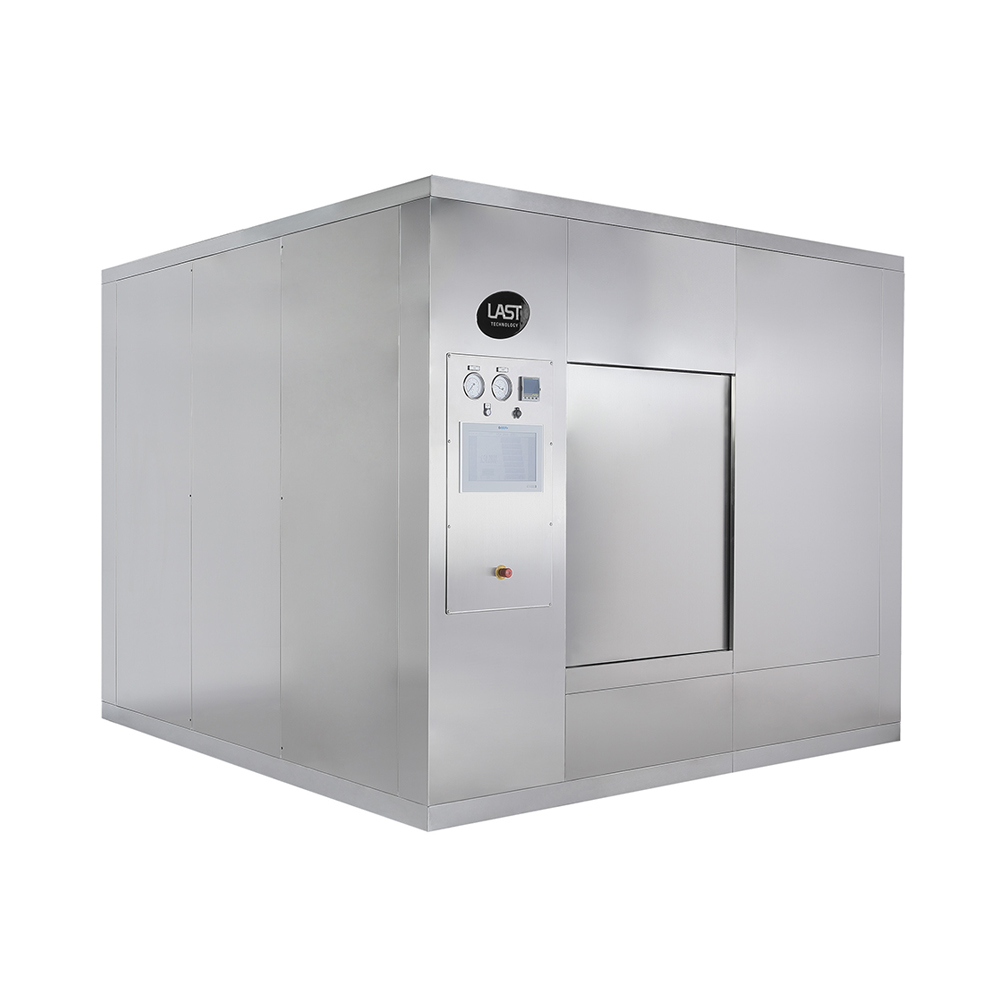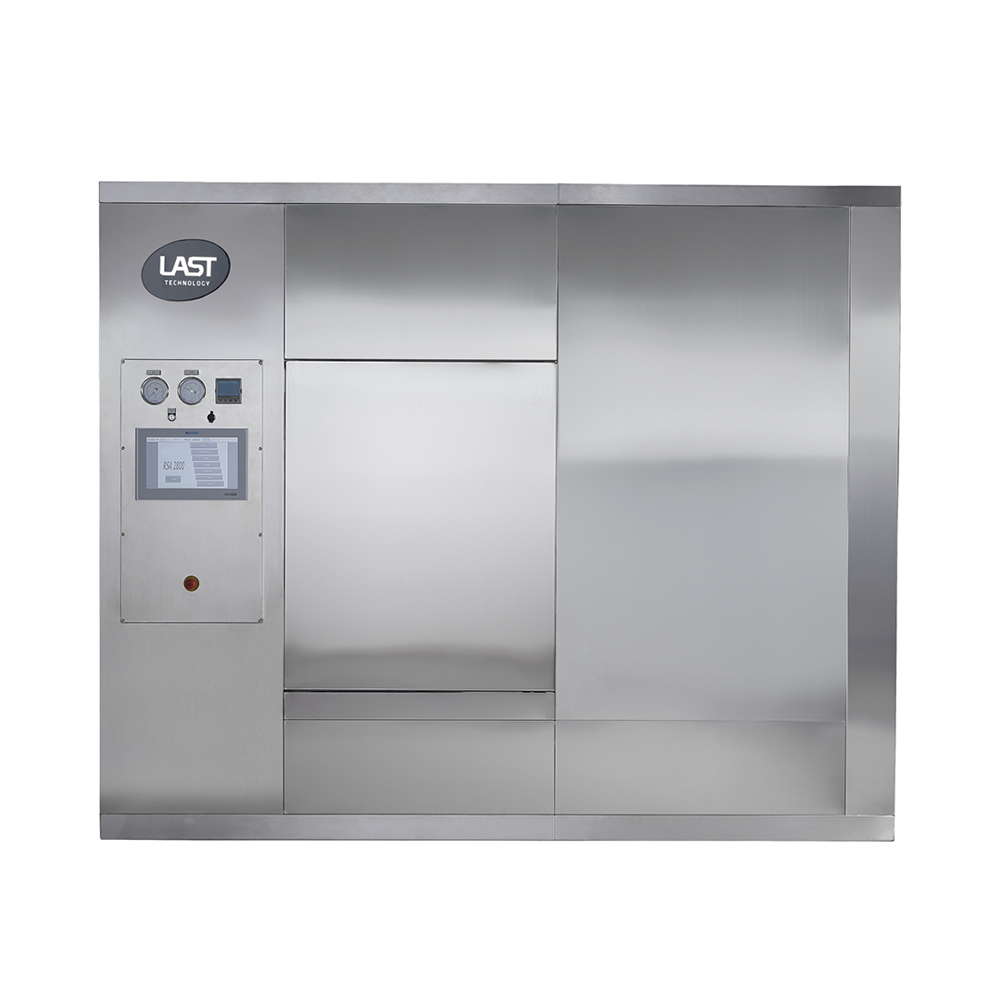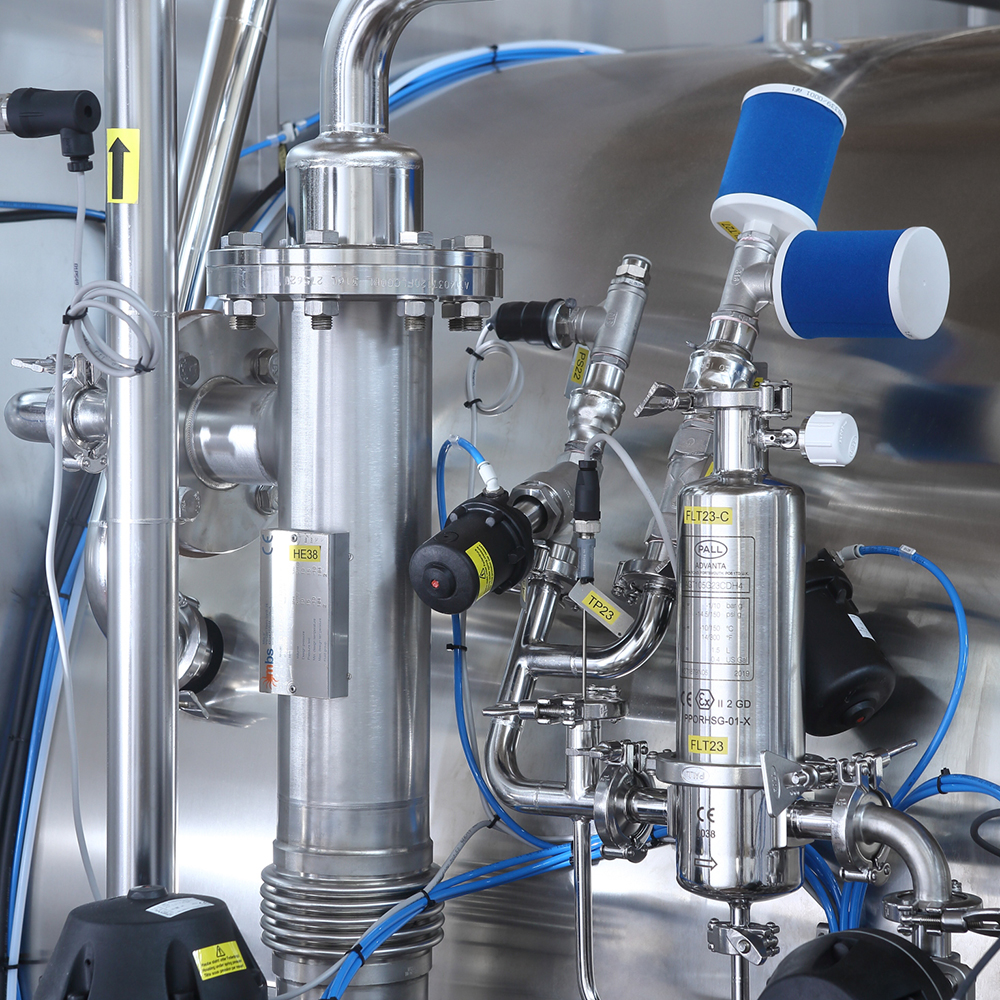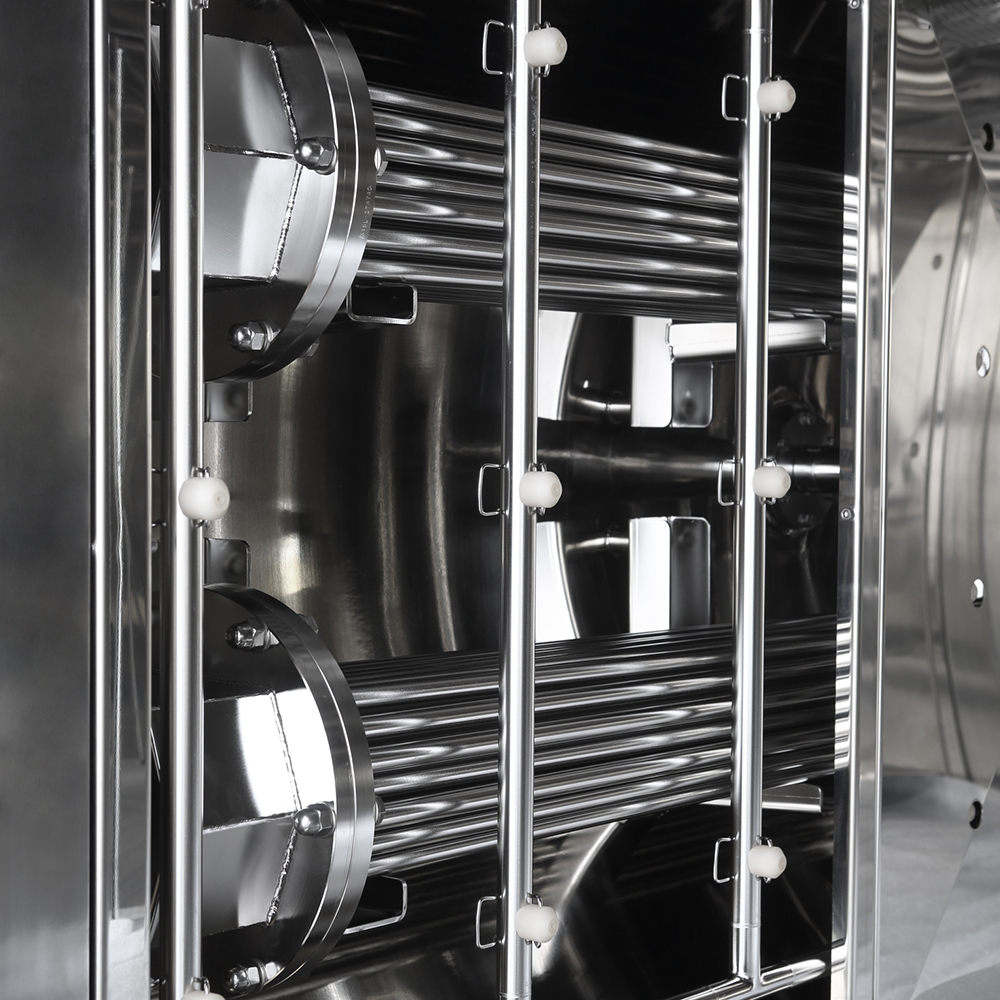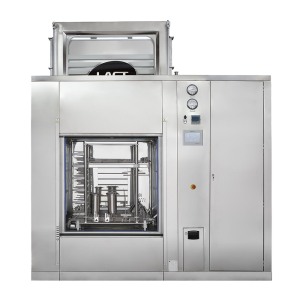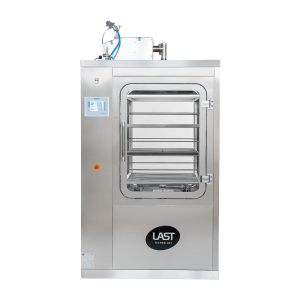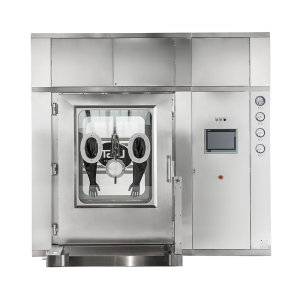- Predefined and custom programmes for all needs. The machine process is developed by our Automation department in compliance with current regulations/standards and the type of product being sterilized.
- Sterilization with saturated steam (EN 285).
- Programme for processing solids or porous materials (clothing, rubber caps, steel, plastic and rubber machine components, etc.). The programme features the alternation of vacuum and steam pulses (air extraction), the injection of clean saturated steam for sterilization purposes and finally, a vacuum drying phase. The steam is injected into the sterilization chamber via a PID-controlled automatic modulating valve and the condensate generated is continuously evacuated via the drain to ensure excellent heat distribution throughout the sterilization phases (temperature deviation less than ± 0.4°C).
- Terminal sterilization using a mixture of Air + Steam.
- A built-in ventilation system mixes the clean steam and air together, thus creating the sterilization medium.
- This processing method is recommended for complex plastic or glass containers, such as pre-filled syringes or vials in which condensate may form and become problematic for the finished product. The system ensures optimum heat distribution throughout the entire sterilization phase (temperature deviation less than ± 1°C). These autoclaves also feature an improved drying process, thanks to the ventilation system that prepares the unloaded product for labelling and packaging.
- Terminal sterilization using overheated Water.
- A high-flow water recirculation system, thanks to the centrifugal pumps and “double-head multitube” heat exchangers which allow a “water” medium (WFI or PW) to be used as a means of transferring heat to warm up, sterilize and cool down the load. The system ensures optimum heat distribution throughout the entire sterilization phase (temperature deviation less than ± 1°C). This process method includes faster cycles but the treated product comes out still damp. Nevertheless, it is still the preferred method in most cases, due to its simplicity, cost-effectiveness and ease of validation.
RSA PREMIUM TYPE
cGMP 3-IN-1 STERILIZERS
RSA PREMIUM TYPE
cGMP 3-IN-1 STERILIZERS
RSA PREMIUM autoclaves are combined devices designed for three types of sterilization: with clean saturated steam for solid materials; with a mixture of air and steam for liquids in small containers; and with overheated water for large containers.
POROUS, NON-POROUS AND LIQUIDS
"SATURATED STEAM + MIXED AIR/STEAM + OVERHEATED WATER"
60°C – 134°C
- Circular cross-section sterilization chamber with square or rectangular hatches (doors).
- A flat/circular jacket completely surrounds the chamber for a quick and uniform load heating/cooling.
- Reinforcements are welded onto the outside of the jacket to ensure stable operating conditions.
- The chamber is placed on a base designed to evenly distribute the weight on the floor.
- The loading cart-insertion and removal guides are placed on the bottom of the chamber; they are also height-adjustable.
- The bottom of the chamber converges towards the drain sump to facilitate the condensation drain.
- Two 2” tri-clamp ferrules are welded to the chamber for validation purposes (temperature uniformity mapping and pressure tests).
- All of the chamber’s internal surfaces are mechanically polished and then undergo chemical degreasing, pickling and passivation treatments. Surface finish ≤ 0.35 micron.
- The chamber can be installed at floor level or in a pit (depending on the size).
mail
Subscribe to our newsletter
Stay up to date with the latest news from LAST Technology

